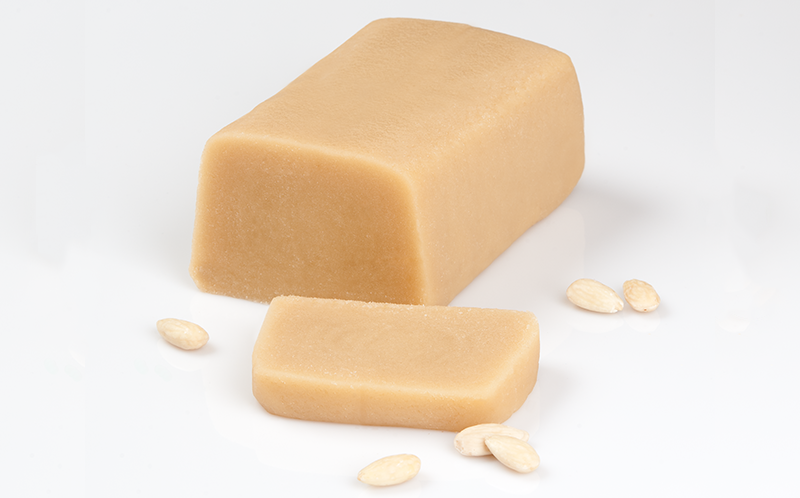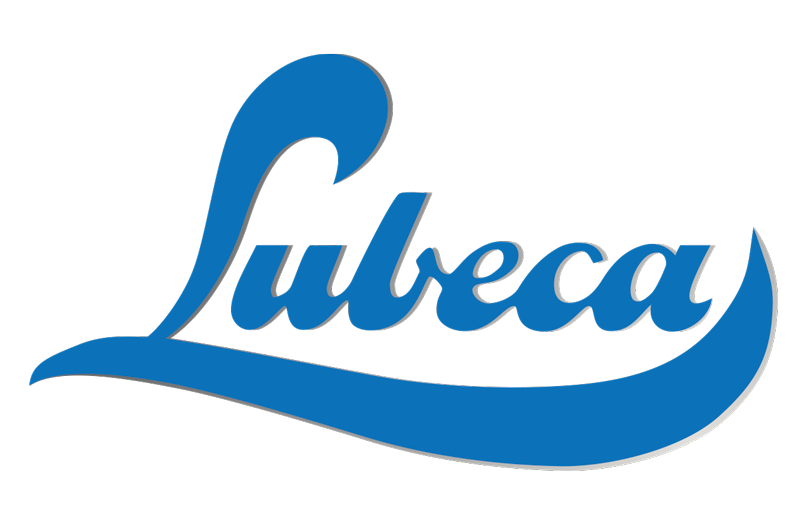Marzipan knowledge
Strict rules for the highest quality
The product description for the use of the PGI provides for the following:
• Lübeck marzipan: 70 parts paste, 30 parts sugar
• Lübeck Edelmarzipan : 90 parts paste, 10 parts sugar.
Any commercial marzipan that is referred to as Edelmarzipan must have the composition of
Lübeck marzipan.
Our traditional production method and our high quality standards guarantee, then as now, a level of quality that is highly appreciated, especially by marzipan connoisseurs. Apart from the roasting process in open copper roasting kettles, the secret is the high standards we have already mentioned for the raw materials. For our top-quality products, for example, we prefer almonds from plantations in the Mediterranean region, which have a particularly pronounced almond aroma due to their provenance and climate.
The composition
of classic marzipan varieties
The percentage of the marzipan paste in the total weight.

A legend from the Arabian Nights
Marzipan – the harem confectiont
It was a time of changes and challenges, of trade and transformation. The world was in motion: Islam was spreading, the papacy was becoming powerful. And it was the time from Mohammed to Charlemagne. The eighth century changed the world. In the context of this change, a sweet delicacy from the East reached the West: marzipan.
But it was not until much, much later that marzipan was given the honour it deserved in the Hanseatic city of Lübeck. Exactly how and when marzipan became so well known has only been handed down in scraps. It could have happened around 1407, when a famine occurred in Lübeck. Grain was scarce and bread hard to come by. So the Senate called on all Lübeck bakers to make bread from almonds, sugar and water! In this case, necessity was the mother of a treat and a passion: Marzipan. One thing is certain, “marci panis”, literally the bread of St Mark from Venice, tastes delicious! At the time, the name referred to the good trade relations between Lübeck and the city of the gondolas. Or is Byzantium, the ancient city on the Bosporus, the origin? Could Mauthaban, the name of the Byzantine coin that was used to pay for all kinds of goods, be a derivation of marzapane – today’s marzipan? Questions upon questions that no one can really answer nowadays. The question as to the exact recipe also remains unanswered. Lübeck ’s marzipan companies still remain tight-lipped on how they produce this sweet delicacy, as they did then.
Thomas Mann also fell for the charm and flavour of marzipan, which once served as a harem confection. In his 1926 essay “Lübeck as an intellectual way of life ”, he described the delicacy as follows: “And if you take a closer look at this sweet, this mixture of almonds and rose water and sugar, you can’t help suspecting that the Orient is at play here, that you have a harem confection before you, and that the recipe for this sumptuous gastric burden probably came to Lübeck […] via Venice.”
Lübeck marzipan – an expensive luxury? It used to be – until the sugar beet was discovered in the 18th century. This helped marzipan and Lübeck achieve a breakthrough, and this time for everyone. Marzipan was suddenly affordable. The beet cultivation around Lübeck and its geographical location as a Hanseatic port city turned Lübeck into Germany ’s marzipan city. This is still the case to this day. Lübeck marzipan is a protected geographical indication under EU law. The quality requirements for Lübeck marzipan are set higher than those for commercially available marzipan and are protected under an EU Ordinance. And Lubeca is proud to be located in Stockelsdorf near Lübeck, right in the centre of marzipan – for over 100 years at this point.
